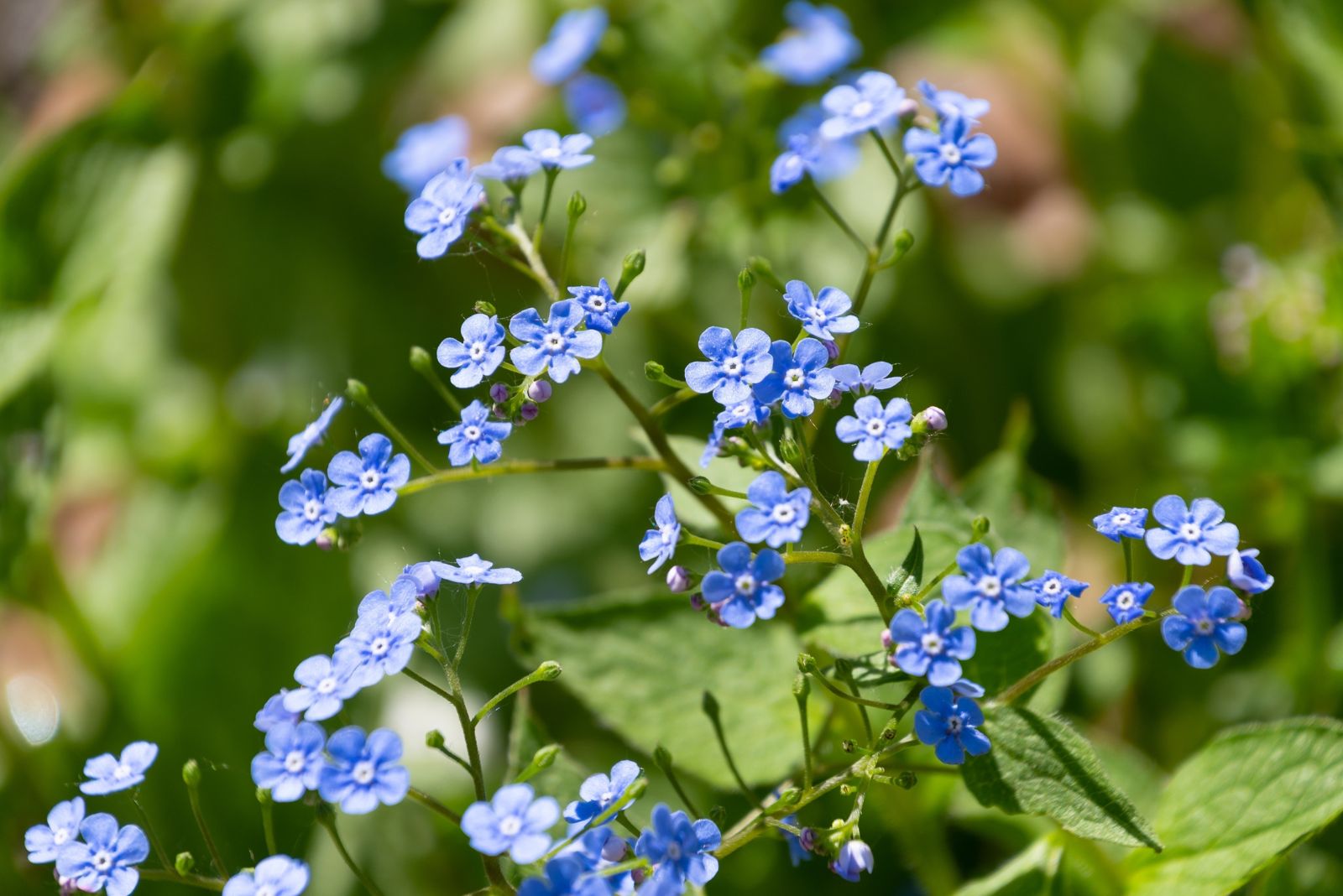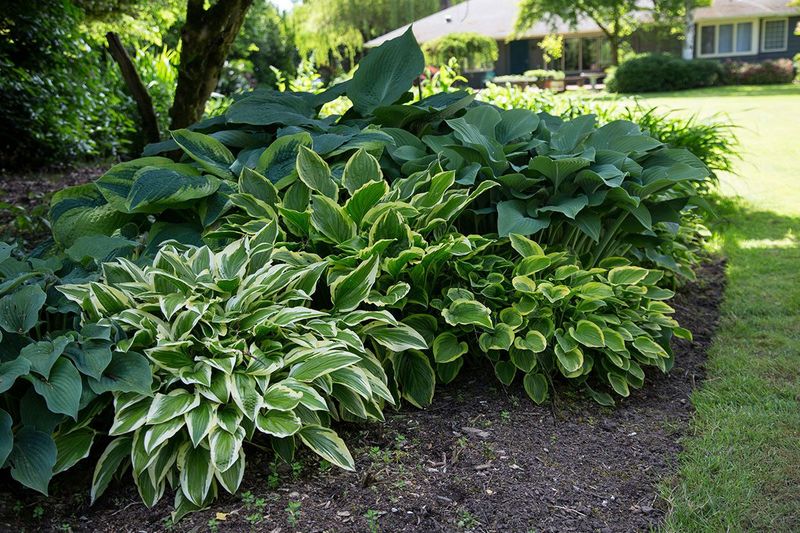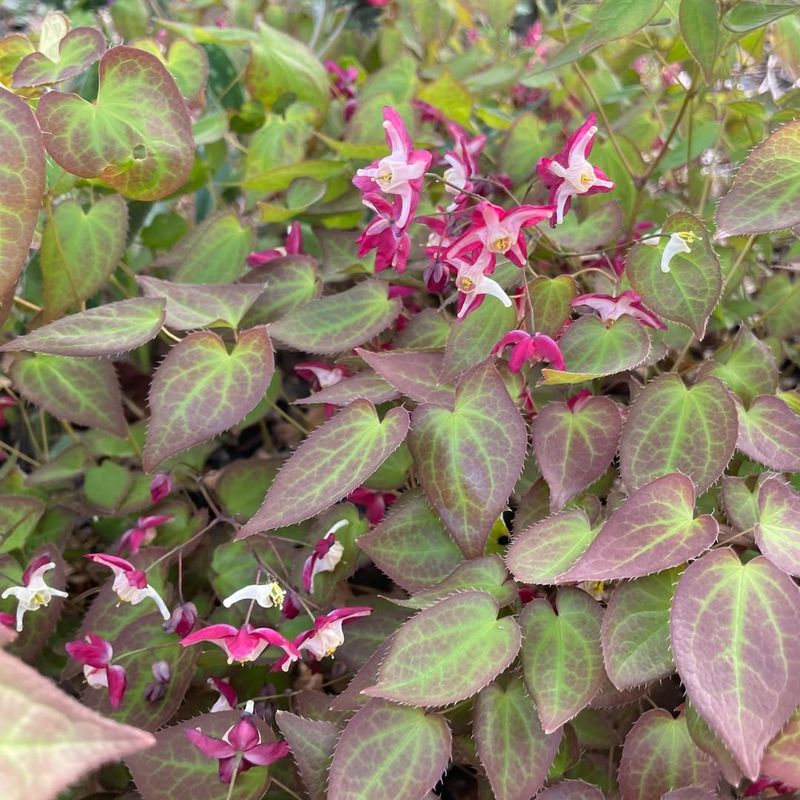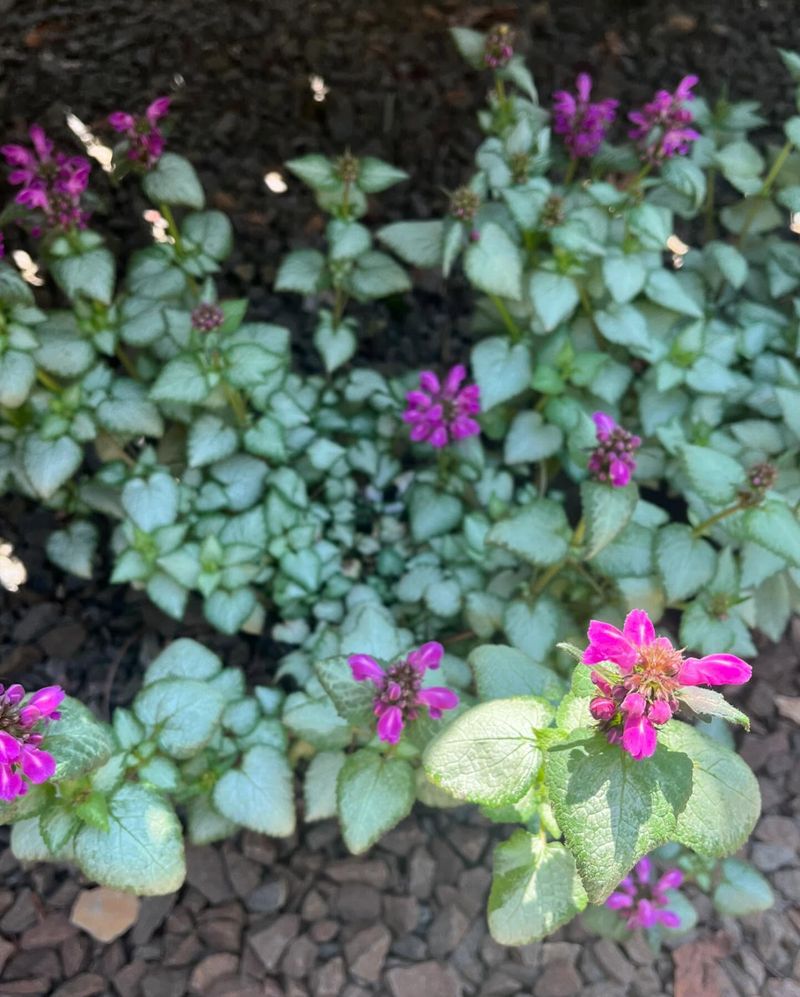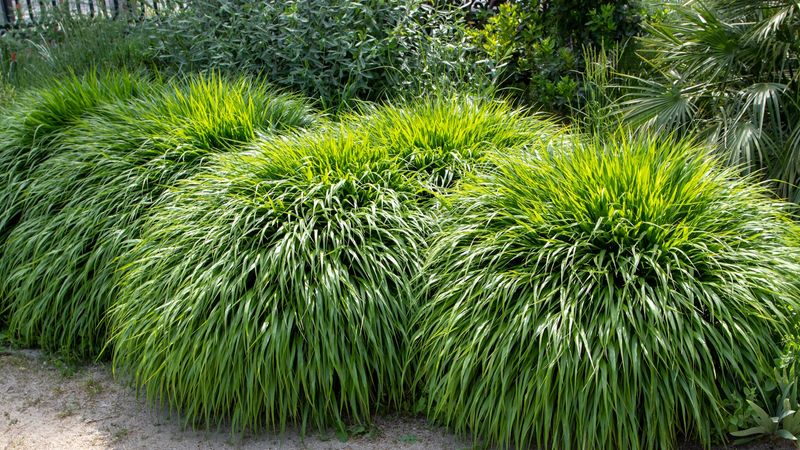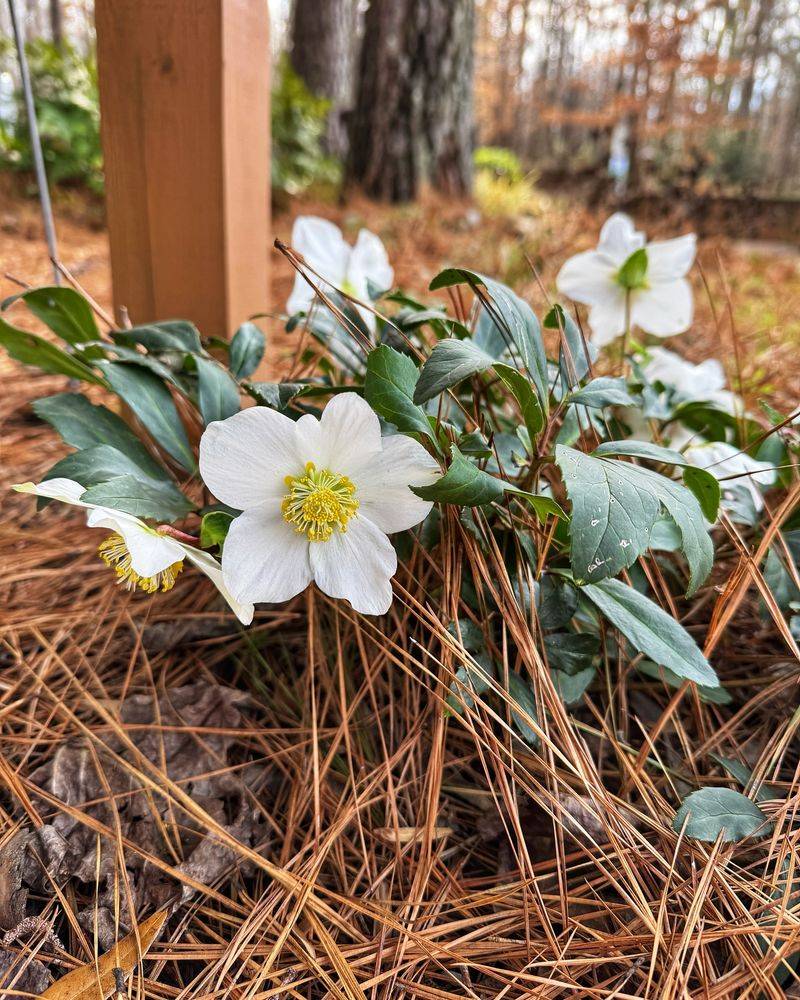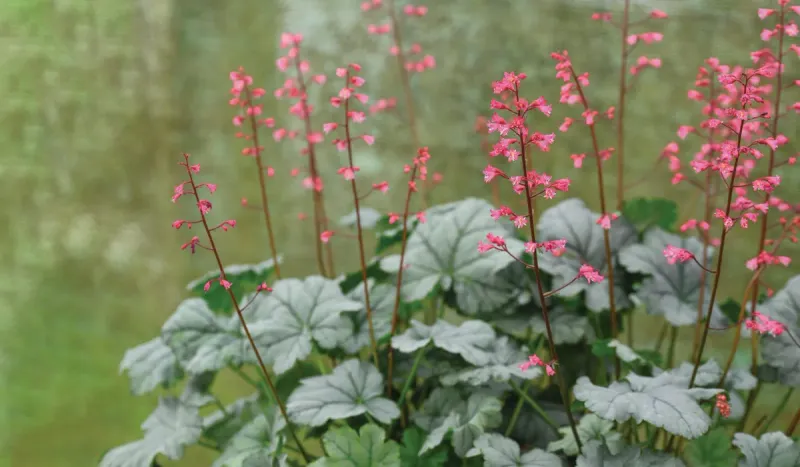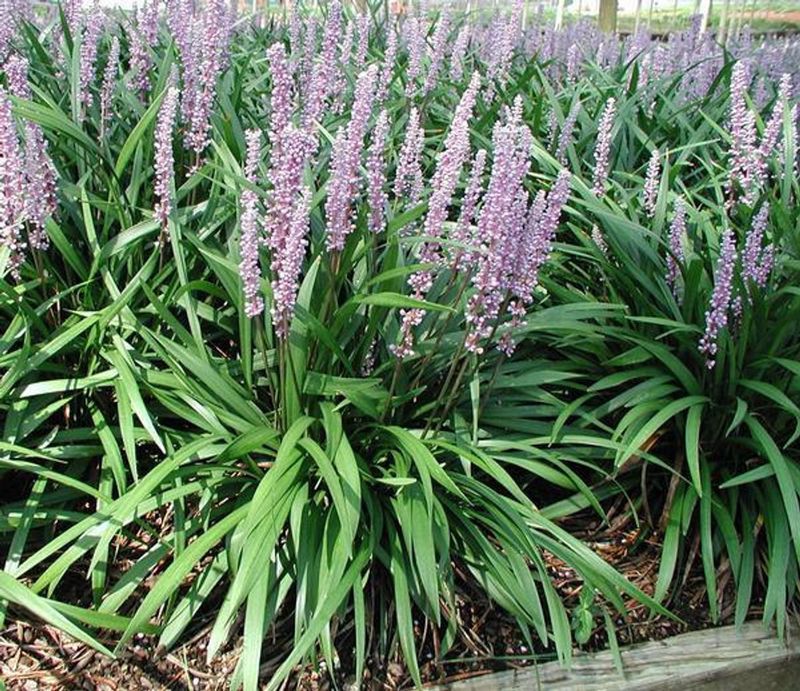I used to think the dry shady corner of my yard was a lost cause. No matter what I planted, the soil stayed dusty, the light stayed low, and every flower I tried seemed to give up before it even settled in. Then I started experimenting with plants that actually enjoy those tougher spots, and the change felt almost magical.
Little by little, that gloomy patch turned into one of the most interesting parts of my garden. Some plants may struggle there, but others rise to the challenge and flourish without a fuss.
1. Hostas
Hostas are probably the most popular choice for shady spots, and honestly, they’ve earned that reputation. Their big, beautiful leaves come in so many colors like green, blue, yellow, and even variegated patterns that add instant interest to any garden.
They’re incredibly forgiving and can handle dry soil once they’re established. Just give them a little water during their first season, and they’ll reward you with stunning foliage year after year without much fuss at all.
2. Epimedium
Sometimes called fairy wings or bishop’s hat, epimedium is one of those plants that doesn’t get enough credit. The dainty flowers in spring look like tiny dancing fairies, and the heart-shaped leaves stay attractive through most of the season.
This groundcover spreads slowly and fills in bare areas without being aggressive. It tolerates dry shade better than most plants and even helps prevent weeds from taking over, which is always a bonus in my book.
3. Lamium
Lamium is a cheerful little groundcover that brightens up dark corners with its silvery, variegated leaves. The small purple or pink flowers add a nice pop of color in spring and early summer.
What I really appreciate about lamium is how quickly it fills in empty spaces without needing constant watering. It’s tough enough to compete with tree roots and still looks fresh and vibrant even when other plants are struggling in dry conditions.
4. Japanese Forest Grass
Japanese forest grass brings movement and elegance to shady areas with its cascading, golden-yellow blades that seem to glow even in low light. There’s something almost magical about watching it sway gently in the breeze.
While many grasses prefer sun, this one actually thrives in shade and handles dry conditions surprisingly well once it settles in. It works beautifully as an accent plant or massed together for a dramatic effect that feels very zen and peaceful.
5. Bergenia
With thick, glossy leaves that look almost like elephant ears, bergenia adds bold texture to shady spots that need some visual weight. In early spring, clusters of pink or white flowers emerge on sturdy stems above the foliage.
Bergenia is incredibly drought-tolerant once established and keeps its leaves year-round in many climates, providing interest even in winter. The foliage often turns burgundy or bronze in cold weather, giving you an unexpected bonus of seasonal color that’s really striking.
6. Hellebores
Hellebores bloom when almost nothing else does, pushing up their nodding flowers in late winter or very early spring. Some people call them Lenten roses, and they come in gorgeous shades of white, pink, purple, and even deep maroon.
They’re exceptionally tough plants that laugh at dry shade and deer. The evergreen foliage stays attractive all year, and once planted, they’ll spread slowly and reseed themselves, creating lovely natural drifts without any help from you whatsoever.
7. Solomon’s Seal
Solomon’s seal has this wonderful arching habit that makes it look graceful and elegant without trying too hard. Small, bell-shaped white flowers dangle beneath the stems in spring, followed by dark blue berries that birds absolutely love.
This native woodland plant is perfectly adapted to dry shade conditions and spreads through rhizomes to form attractive colonies over time. It pairs beautifully with hostas and ferns, creating a layered woodland look that feels completely natural and effortless in your garden space.
8. Brunnera
Brunnera’s heart-shaped leaves are often splashed with silver markings that practically shimmer in low light, making dark corners look instantly brighter. In spring, clouds of tiny blue flowers that look like forget-me-nots hover above the foliage.
This perennial handles dry shade like a champion once its roots get established. The foliage stays attractive all season long, and unlike some shade plants, it doesn’t go dormant or look ratty by midsummer, which makes it a reliable performer you can count on.
9. Heuchera
Heuchera, commonly called coral bells, offers an incredible range of foliage colors from deep purple and burgundy to lime green and peachy orange. The leaves are often ruffled or have interesting patterns that add texture and drama to any planting.
While they prefer some moisture, many varieties adapt well to drier shade conditions once established. Delicate flower spikes appear in summer, but honestly, the foliage is the real star here, providing nonstop color and interest throughout the entire growing season beautifully.
10. Liriope
Liriope looks like ornamental grass but it’s actually a tough little perennial that forms neat clumps of dark green, grass-like foliage. In late summer, purple or white flower spikes emerge, adding vertical interest when many other plants are winding down.
This plant is practically indestructible in dry shade and works wonderfully as an edging or groundcover. It stays evergreen in mild climates and tolerates neglect better than almost anything else, making it perfect for those problem areas you’ve been avoiding for way too long.

